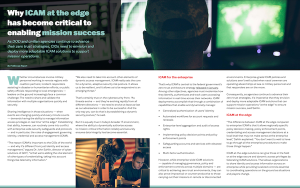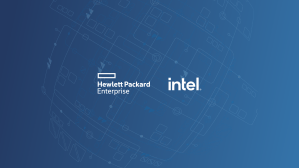- Sponsored
- Emerging Tech
Why ICAM at the edge is critical to enabling mission success

As defense and civilian agency CIOs seek to centralize their enterprise identity, credential and access management (ICAM) solutions, they face a mounting challenge. Those centralized access control policies frequently fail to work for military personnel, first responders and others operating in fast-changing situations on the ground.
At issue: The users and devices operating at the tactical edge of military, government and public safety networks, by their nature, change constantly.
Sharing intelligence in those situations — often when every minute counts — demands having the ability to manage information access privileges in real time at the edge, according to a new report released by GDIT.

“The reason ICAM is important to the CIOs of the world — and why it’s different from just identity and access management — is that we’re adding the vital element of other types of credentialing,” argues Dr. John Sahlin, director of cyber solutions of GDIT. That includes taking into account telemetry information. “And the only way you can do that is by establishing a dynamic security posture,” he explains.
Sahlin highlights the distinctive requirements of enterprise ICAM solutions at government agencies. That has taken on increased urgency as agencies establish broader zero-trust security architecture.
However, Sahlin also urges agency CIOs to think more tactically, to ensure that ICAM governance policies and controls agencies are appropriate for rapidly unfolding circumstances in the field where secure access to information remains critical.
“The difference between ICAM at the edge compared to enterprise ICAM is that it allows regionally specific policy decision-making, policy enforcement points, credentialing and access management decisions at a local level that may not make sense at the enterprise level,” Sahlin explained. “You don’t want to wait to have to go through all the enterprise procedures to make those things happen.”
The report recommends ways agency CIOs can establish a better balance between enterprise ICAM and ICAM-at-the-edge solutions. It also discusses ways GDIT is helping federal agencies create planning models to better “harmonize” disparate ICAM solutions.
Read more about optimizing ICAM solutions and how GDIT is supporting those efforts at defense and civilian agencies.
This article was produced for FedScoop by Scoop News Group and sponsored by GDIT.






